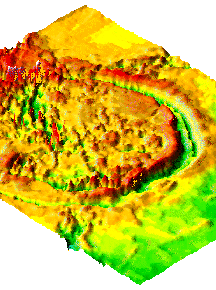This is an image of Artemis Corona.
NASA
Venus Coronae
The feature of Venus' topography called a "Corona" is a deep, curving, trench surrounding an elevated plain. Coronae is the plural term for corona.
This is an image of Artemis Corona which is found on Aphrodite Terra, and is the largest of the coronae. This coronae shows a nearly circular trench (Artemis Chasma) that surrounds the corona with a diameter of over 2000 km (1250 mi). The corona rim can rise as much as 6000 m (20,000 ft) above the bottom of this trench, and the interior is a plateau standing 2000 m (6500 ft) above the surrounding plains.
Based on the similarity of the shape of the trench to the shapes of island arcs (a part of the subduction process) on Earth, coronae have been identified as a potential location of subduction on Venus.
You might also be interested in:

How did life evolve on Earth? The answer to this question can help us understand our past and prepare for our future. Although evolution provides credible and reliable answers, polls show that many people turn away from science, seeking other explanations with which they are more comfortable.
...more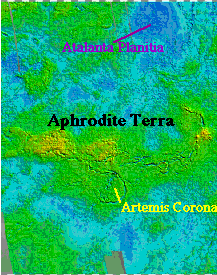
Aphrodite Terra, the Greek name for the goddess Venus, is about half the size of the African continent, and is to be found along Venus' equator. Aphrodite Terra is different from Ishtar Terra in that,
...more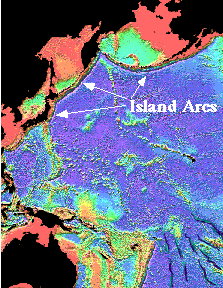
One of the processes of island formation involves lithospheric subduction. As a lithospheric slab is being subducted, a trench is formed at the interface with the adjoining slab. The slab undergoes melting
...more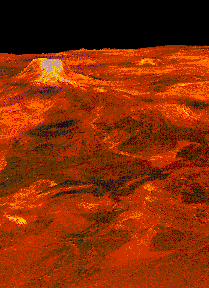
Volcanic rises are thought to form when a portion of the deep mantle is heated to several hundred degrees hotter than its surroundings. This portion of the mantle is now less dense than its surroundings
...more
Volcanic rises are thought to be formed by plumes, in a similar fashion to island formation on Earth. On Venus, there are three types of volcanic rises: Rift-Dominated Rises These are rises that contain
...more
Alpha Regio and Ovda Regio are examples of what is known as a "Plateau Highland" of Venus. Among the volcanic features of Alpha Regio is Eve Mons. Unlike volcanic rises, plateau highlands have few volcanoes,
...more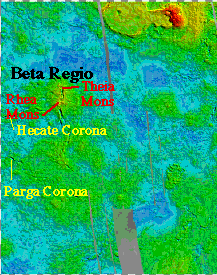
Beta Regio and Atla Regio are examples of what is known as a volcanic rise. Volcanic rises are broad, sloping highlands over 1000 km across. They are cut by deep troughs 100-200 km across. These troughs
...more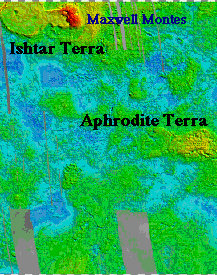
Ishtar Terra is one of the Plateau Highlands of Venus, is found near the north pole, and is about the size of the continental United States. Ishtar Terra contains the four main mountain ranges of Venus
...more
